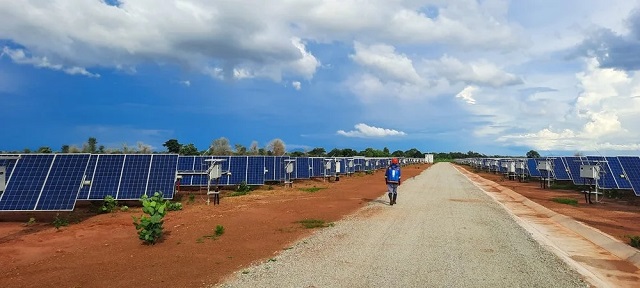
Madi-Okollo, Uganda | THE INDEPENDENT | Up to 192,640 households in the West Nile sub-region are set to benefit from reliable electricity following groundbreaking work by a government-backed independent power developer. The project will establish a 24 MWp Solar Photovoltaic (PV) plant in Madi Okollo district.
The solar plant, implemented by Ituka West Nile Uganda Limited, a subsidiary of AMEA Power, an independent Dubai-based renewable energy operator, will generate approximately 53,940 megawatt hours (MWh) of clean energy annually, offsetting 26,600 tonnes of carbon emissions.
This development follows a Power Purchase Agreement (PPA) signed in September 2023 between the Uganda Electricity Transmission Company Ltd (UETCL), a parastatal responsible for bulk electricity purchases and transmission, and the Ministry of Energy and Mineral Development.
Located on a 52-hectare site in Ombachi village, Uleppi Sub County, the Ituka solar power plant includes a medium voltage 33/132 kV transformer switchyard.
The electricity generated will pass through the newly constructed Lira-Gulu-Nebbi-Arua 132 kV transmission line operated by UETCL.
Cosmas Omua, Ombachi village LCI Chairperson, stated that 19 landlords contributed land for the project and were duly compensated. The company also paid for the relocation of 53 graves from the project area. “All the graves were transferred to other areas, and the solar project land is now free from any encumbrances,” he said.
Hussain Al Nowais, Chairman of AMEA Power, noted that the construction of this landmark solar project aligns with Uganda’s vision for a cleaner and more sustainable energy future. “We are confident that the solar power plant will deliver substantial economic and environmental benefits for the country,” he said.
Dr. Ruth Nankabirwa, Minister of Energy and Mineral Development, highlighted that the Ituka Solar Power plant, the second largest in the country after Kabulasoke Plant in Gomba District, supports Uganda’s Nationally Determined Contribution (NDC) goal of reducing carbon emissions by 24.7% by 2030.
Speaking at the project’s groundbreaking ceremony, Eng. Irene Pauline Bateebe, Permanent Secretary of the Ministry of Energy and Mineral Development, said the solar project complements the Electricity Access Scale Up Project (EASP) already launched in the West Nile region to achieve Uganda’s universal energy access agenda.
EASP, a five-year flagship initiative funded by the World Bank at USD 638 million (approximately 2.355 trillion Shillings), aims to increase access to electricity for households, commercial enterprises, mining centers, industrial parks, public institutions, and Refugee Host districts, ultimately spurring socio-economic transformation.
EASP interventions include 1,073,500 new on-grid electricity connections, 150,000 off-grid new electricity connections, 300,000 clean cooking energy solutions for households and commercial enterprises, Solar PV Electrification of 750 Public Institutions, and 50 Rural water Schemes across the country.
Ituka, a Lubara word meaning the sun, represents a USD 19 million (approximately 70.144 billion Shillings) investment project. Financing was secured during COP28 from the Emerging Africa Infrastructure Fund (EAIF). COP28 was the 28th annual United Nations climate meeting held in Dubai, UAE, where governments discussed future climate change preparations.
President Yoweri Kaguta Museveni commissioned the connection of West Nile to the National grid at Nebbi Station on Saturday, 3 August 2024, addressing the region’s unreliable electricity supply issue that has persisted since Uganda gained independence in 1962. Currently, access to electricity in Uganda stands at 57%, with off-grid Solar PV contributing 38%.
The unserved population ready to receive power is estimated between 5–7 million households, equivalent to approximately USD 3 billion (about 11 trillion Shillings).
Through EASP, the government has dedicated over 42,000 connections for the West Nile region, shared among the nine districts of Arua, Zombo, Maracha, Nebbi, Pakwach, Koboko, Yumbe, Terego, and Madi-Okollo.
****
URN
 The Independent Uganda: You get the Truth we Pay the Price
The Independent Uganda: You get the Truth we Pay the Price






